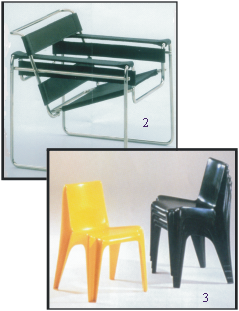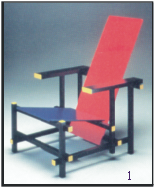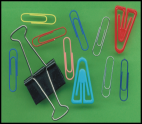























~ Design & Technology ~
Invention and Innovation
Invention and Innovation
Design and Technology has its roots in the process of developing items for everyone use. Realising that we need something to achieve something else ~ and then setting about making something to satisfy that need ~
is the process of invention. In order for this to happen successfully we have first to carefully define what we are trying to achieve. We set ourselves a brief and explore the possible solutions that might be successful - a poor brief may easily lead to an unsuccessful product.
is the process of invention. In order for this to happen successfully we have first to carefully define what we are trying to achieve. We set ourselves a brief and explore the possible solutions that might be successful -
An economic historian, Abbot P. Usher identified the four stages of invention to be: ‘Recognising the problem’ -
‘Collecting information related to the problem‘ - ‘Finding a solution by careful or inspirational acts‘ -
other products can be seen to depend on developments in science or other areas of technology. Remember that ‘Market-Pull’ is the other simple class of innovation.
The three chairs shown on this page might reflect a mixture of these principles with the top picture showing the famous ‘Rietveld’ (De Stijl Dutch minimalist) design of 1918. In this product Reitveld created a cubist look by defining different coloured planes. In the world of metals and their development it was only in 1912 that a researcher at the Firth-Brown laboratories in Sheffield ‘discovered’ the useful properties of chromium in steels and yet during the First World war of 1914-1918 Stainless and chromium steels were




Rietveld
Breuer
Bofinger
Breuer
Bofinger
Getting things right at this early stage is essential if you are the manufacturer since to change aspects of the design after production has started, even only in a few minor ways, will be exceptionally costly later on - as well as possibly leading to lost customers. Almost certainly in all design projects ‘production engineering’ was more carefully considered in the design process the closer the product moved towards manufacture.
and ‘Critically revising the found solution’ ... and perhaps involving new ‘acts of insight’. So, from a fundamental idea - an invention, ‘an item’, must be adapted to be used. When this happens an innovation exists and can be adapted many more times as the market for it changes. This happens repeatedly with products and the product’s development is defined with an “S-shaped product curve ”. This curve is a part of the product life cycle.
You can’t think of many inventions that have not become successful products and have not therefore become successful innovations. Why would you say this Victorian Self-Tipping hat didn’t catch on and become a big selling product? Two different approaches to creating an innovation are considered to exist. These are classified as ‘technology push’ innovations when scientific discoveries are suddenly available and find their way into products. The laser is an example of this where following the discovery of the principles involved, and the perfection of the equipment, it has become part of products used for cutting - in fields as far apart as textiles, metals, tailoring and medicine. Many

Crazy
Products
Products
being used by the military. By 1925, the date of the Marcel Breuer design, the material was finding its way into new innovative products such as those produced by the Bauhaus group of designers and teachers - of which Breuer was one. This is called ‘technology push’ development. The development of plastics occurred throughout the 1950’s & 1960’s ( and of course is still going on now as new qualities are demanded by new needs.) New techniques of manufacturing are developed as new materials emerge and the ‘injection-moulded’ plastic chairs shown in the third picture (the Hemlut Batzner -”Bofinger” chair ) demonstrate how the availability of new materials and processes lead to new ‘fashionable’ products. Such small changes in products, processes and materials (‘incremental’) often go with ‘market-pull’.
The ball-point pen must be one of the most used products of the last few years and yet the technology behind it is taken for granted. Considerable developments have affected it as market demands and legislation have made it evolve. Two individuals whose names might sound familiar have been involved in its development as both owned companies or patents that defined it as a product. Laszlo BIRO was a Czechoslovakian who resurrected an unpatented idea from the 1880’s and with his brother who was a chemist ( and could therefore develop quick-drying inks) started production of the BIRO pen. There are many interesting stories associated with its early days ( The first pens sold-out in the USA and were the ‘ultimate’ fashion/status symbol...) but without the additional contribution of Marcel BICH and the demands of pilots in World War II for large numbers of the new pen; ( unpressurised military aircraft would not allow for the effective use of the old-fashioned ‘fountain pens’), we would not so frequently talk about ‘Bics’ and ‘Biro’s‘.
Perhaps another of the most under respected innovation of the 20th century must be the paper-clip (or the stapler). It would be hard to imagine an office without some means of linking individual pieces of paper together and it took a Norwegian inventor, Johan Vaaler, to think of the idea (1899) and devise a machine that would make them automatically. Very useful that Vaaler was a patent clerk !
Finally, consider another simple item of the 20th century which believe it or not saw an amazing amount of effort and development :
Finally, consider another simple item of the 20th century which believe it or not saw an amazing amount of effort and development :
the ‘Post -it-note’ -see what you can find out.-
The Post-it-note is a story of innovation and perseverance !





